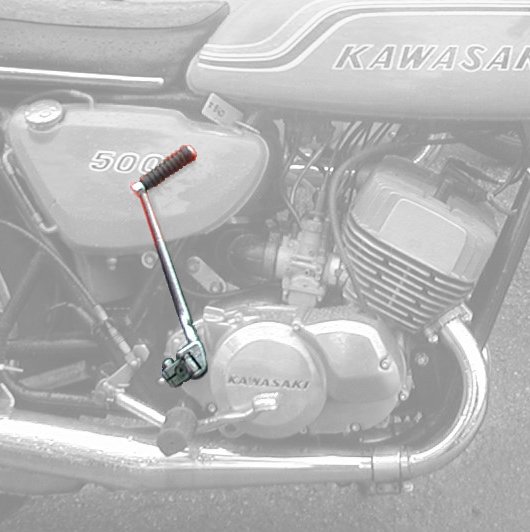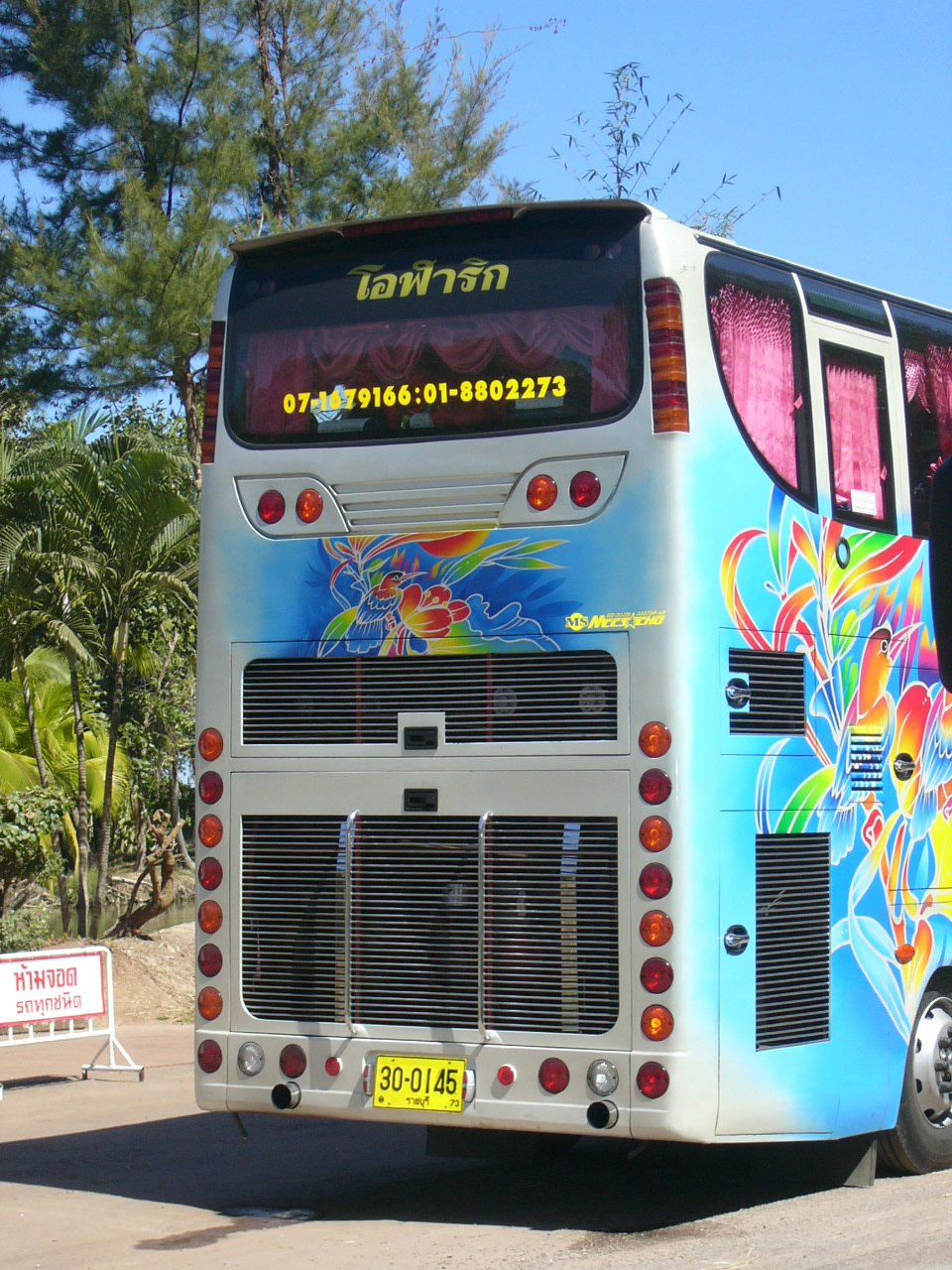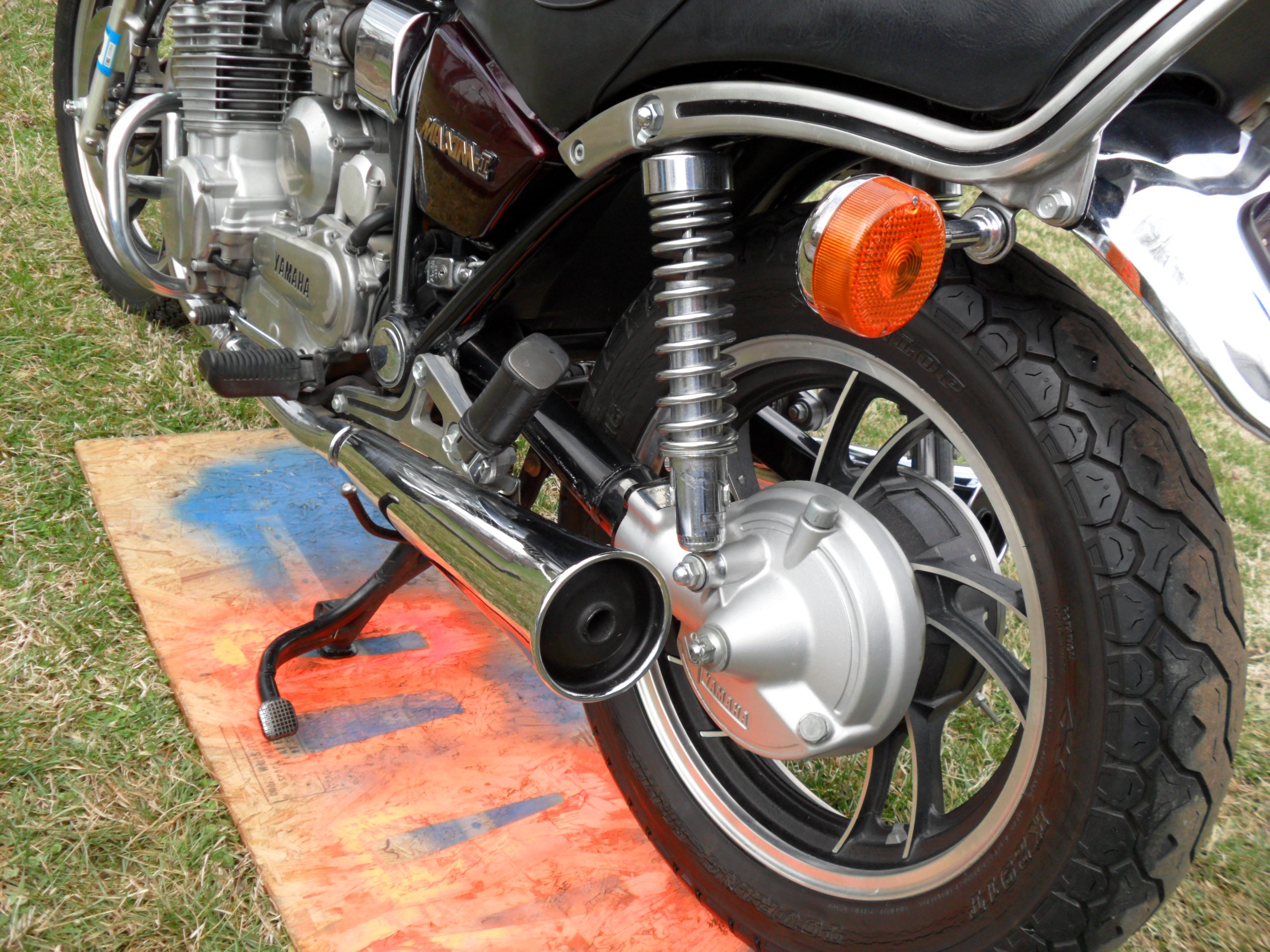|
Yamaha IT175
Yamaha IT175 belongs to the 'International Trial' family of motorcycles, produced during the 1970s and 1980s. The machine is derived from the Yamaha YZ range of competition motocross bikes with modifications for use in competition enduro, hare and hounds and trail riding. The bike uses an air-cooled, two-stroke, single-cylinder engine with pre-mixed fuel. It is kick start only. There are three derivations of the machine for the global market. A U.S. and Canada market version, a European version and an Oceanic version for other World markets. The IT bikes were designed and sold as enduros and can still be plated and registered today, provided you make the necessary modifications to the tail light. Another option is to get a historical plate and use the old brake signal along with your other hand signals for turning. Other bikes in the IT range include IT125, IT200, IT250, IT425, IT465 and IT490. The IT range was superseded by the WR (Wide Ratio) in 1991 with the introduction of ... [...More Info...] [...Related Items...] OR: [Wikipedia] [Google] [Baidu] |
Yamaha Motor Company
is a Japanese multinational manufacturer of motorcycles, marine products such as boats and outboard motors, and other motorized products. The company was established in 1955 upon separation from Yamaha Corporation (however, Yamaha Corporation is still the largest private company shareholder with 9.92%, as of 2019), and is headquartered in Iwata, Shizuoka, Japan. The company conducts development, production and marketing operations through 109 consolidated subsidiaries as of 2012. Led by Genichi Kawakami, the company's founder and first president, Yamaha Motor spun off from musical instrument manufacturer Yamaha Corporation in 1955 and began production of its first product, the YA-1 125cc motorcycle. It was quickly successful and won the 3rd Mount Fuji Ascent Race in its class. The company's products include motorcycles, scooters, motorized bicycles, boats, sail boats, personal water craft, swimming pools, utility boats, fishing boats, outboard motors, 4-wheel ATVs, recreat ... [...More Info...] [...Related Items...] OR: [Wikipedia] [Google] [Baidu] |
Air-cooled Engine
Air-cooled engines rely on the circulation of air directly over heat dissipation fins or hot areas of the engine to cool them in order to keep the engine within operating temperatures. In all combustion engines, a great percentage of the heat generated (around 44%) escapes through the exhaust, not through the metal fins of an air-cooled engine (12%). About 8% of the heat energy is transferred to the oil, which although primarily meant for lubrication, also plays a role in heat dissipation via a cooler. ''Air-cooled engines'' are used generally in applications which would not suit liquid cooling, as such modern air-cooled engines are used in motorcycles, general aviation aircraft, lawn mowers, generators, outboard motors, pump sets, saw benches and auxiliary power units. Introduction Most modern internal combustion engines are cooled by a closed circuit carrying liquid coolant through channels in the engine block and cylinder head, where the coolant absorbs heat, to a heat ... [...More Info...] [...Related Items...] OR: [Wikipedia] [Google] [Baidu] |
Two-stroke Engine
A two-stroke (or two-stroke cycle) engine is a type of internal combustion engine that completes a power cycle with two strokes (up and down movements) of the piston during one power cycle, this power cycle being completed in one revolution of the crankshaft. A four-stroke engine requires four strokes of the piston to complete a power cycle during two crankshaft revolutions. In a two-stroke engine, the end of the combustion stroke and the beginning of the compression stroke happen simultaneously, with the intake and exhaust (or scavenging) functions occurring at the same time. Two-stroke engines often have a high power-to-weight ratio, power being available in a narrow range of rotational speeds called the power band. Two-stroke engines have fewer moving parts than four-stroke engines. History The first commercial two-stroke engine involving cylinder compression is attributed to Scottish engineer Dugald Clerk, who patented his design in 1881. However, unlike most later two-s ... [...More Info...] [...Related Items...] OR: [Wikipedia] [Google] [Baidu] |
Single-cylinder Engine
A single-cylinder engine, sometimes called a thumper, is a piston engine with one cylinder. This engine is often used for motorcycles, motor scooters, go-karts, all-terrain vehicles, radio-controlled vehicles, portable tools and garden machinery (such as lawnmowers, cultivators, and string trimmers). Single-cylinder engines are made both as 4-strokes and 2-strokes. Characteristics Compared with multi-cylinder engines, single-cylinder engines are usually simpler and compact. Due to the greater potential for airflow around all sides of the cylinder, air cooling is often more effective for single cylinder engines than multi-cylinder engines. This reduces the weight and complexity of air-cooled single-cylinder engines, compared with liquid-cooled engines. Drawbacks of single-cylinder engines include a more pulsating power delivery through each cycle and higher levels of vibration. The uneven power delivery means that often a single-cylinder engine requires a heavier flywheel than ... [...More Info...] [...Related Items...] OR: [Wikipedia] [Google] [Baidu] |
Kick Start
Kick start is a method of starting an internal combustion engine (usually that of a motorcycle) by pushing a ratcheting lever with one's foot. Kick start mechanisms were almost universally a part of motorcycle engines before the mid-1970s, and were phased out of production over the next twenty years or so as electric starters became standard equipment. There are still some motorcycles produced that have both kick and electric starters. Many mopeds and scooters also carry both a kick start and an electric start, the former being useful in case the latter fails, as scooter and moped batteries tend to be smaller and, as a result, run down much faster than other forms of automotive batteries. Also, it is usually not possible to push start a moped or scooter with automatic transmission. Larger motorcycles featured a manual compression release mechanism that made starting easier while modern units did this automatically through a cable attached to the kick start lever. Today, dedic ... [...More Info...] [...Related Items...] OR: [Wikipedia] [Google] [Baidu] |
Tail Light
The lighting system of a motor vehicle consists of lighting and signalling devices mounted to or integrated into the front, rear, sides, and in some cases the top of a motor vehicle. They illuminate the road ahead for the driver and increase the vehicle's visibility, allowing other drivers and pedestrians to see its presence, position, size, direction of travel, and its driver's intentions. Emergency vehicles usually have distinctive lighting equipment to warn drivers and indicate priority of movement in traffic. History Early road vehicles used fuelled lamps before the availability of electric lighting. The Ford Model T used carbide lamps for headlights and oil lamps for tail lights. It did not have all-electric lighting as a standard feature until several years after its introduction. Dynamos for automobile headlights were first fitted around 1908 and became commonplace in 1920s automobiles. Silent film star Florence Lawrence is often credited with designing the first " au ... [...More Info...] [...Related Items...] OR: [Wikipedia] [Google] [Baidu] |
Motorcycle Fork
A motorcycle fork connects a motorcycle's front wheel and axle to its frame, typically via a yoke, also known as a triple clamp, which consists of an upper yoke joined to a lower yoke via a steering stem, a shaft that runs through the steering head, creating the steering axis. Most forks incorporate the front suspension and front brake, and allow the front wheel to rotate about the steering axis so that the bike may be steered. Most handlebars attach to the top clamp in various ways, while clip-on handlebars clamp to the fork tubes, either just above or just below the upper triple clamp. The fork and its attachment points on the frame establish the critical geometric parameters of rake and trail, which play a major role in defining how a motorcycle handles and dives during braking. While the standard telescopic fork arrangement is found with few major differences among mainstream street motorcycles since the 1970s, historically there have been many variations, including trailin ... [...More Info...] [...Related Items...] OR: [Wikipedia] [Google] [Baidu] |
Capacitor Discharge Ignition
Capacitor discharge ignition (CDI) or thyristor ignition is a type of automotive electronic ignition system which is widely used in outboard motors, motorcycles, lawn mowers, chainsaws, small engines, turbine-powered aircraft, and some cars. It was originally developed to overcome the long charging times associated with high inductance coils used in inductive discharge ignition (IDI) systems, making the ignition system more suitable for high engine speeds (for small engines, racing engines and rotary engines). The capacitive-discharge ignition uses capacitor discharge current to the coil to fire the spark plugs. History Nikola Tesla The history of the capacitor discharge ignition system can be traced back to the 1890s when it is believed that Nikola Tesla was the first to propose such an ignition system. In first filed February 17, 1897, Tesla writes 'Any suitable moving portion of the apparatus is caused to mechanically control the charging of a condenser and its discharge ... [...More Info...] [...Related Items...] OR: [Wikipedia] [Google] [Baidu] |
Yamaha YZ125
The Yamaha YZ125 is a motocross racing motorcycle with a Two-stroke engine, two-stroke Engine displacement, displacement single-cylinder engine made by Yamaha Motor Company, Yamaha since 1974. It is available to the public. For the first two years it was made with dual rear shocks, then changing to a monoshock. The YZ125 has been ridden to five AMA National Motocross Championships, and multiple AMA Regional Supercross Championships. In 2001, Yamaha released a bike designed to complement the YZ125, the four-stroke YZ250F. The two bikes shared a rolling chassis and are eligible to compete in the same racing class. The YZ250F has a slight horsepower advantage. The YZ125 has a Reed valve#Two-stroke engines, reed valve-inducted two-stroke engine. It was air cooled from 1974 to 1980, and liquid cooled since 1981. It has a Mikuni (company), Mikuni 38 mm TMX series carburetor. The engine produces . The YZ125 has been built with five- or six-speed sequential gearbox, manual sequent ... [...More Info...] [...Related Items...] OR: [Wikipedia] [Google] [Baidu] |
Swingarm
A swingarm, or "swinging arm" (UK), originally known as a swing fork or pivoted fork, is a single or double sided mechanical device which attaches the rear wheel of a motorcycle to its body, allowing it to pivot vertically. The main component of the rear suspension of most modern motorbikes and ATVs, it holds the rear axle firmly, while pivoting to absorb bumps and suspension loads induced by the rider, acceleration, and braking. Originally motorcycles had no rear suspension, as their frames were little more than stronger versions of the classic diamond frame of a bicycle. Many types of suspension were tried, including Indian's leaf spring suspended swingarm, and Matchless's cantilevered coiled-spring swingarm. Immediately before and after World War II, the plunger suspension, in which the axle moved up and down two vertical posts, became commonplace. In the latter, the movement in each direction was against coiled springs. Some manufacturers, such as Greeves, used swingarm d ... [...More Info...] [...Related Items...] OR: [Wikipedia] [Google] [Baidu] |
Yamaha Motorcycles
List of motorcycles manufactured by Yamaha Motor Company. First bikes * YA-1 built August 1954, produced January 1955. The first bike manufactured by Yamaha was actually a copy of the German DKW RT 125; it had an air-cooled, two-stroke, single cylinder 125 cc engine *YC-1 (1956) was the second bike manufactured by Yamaha; it was a 175 cc single cylinder two-stroke. * YD-1 (1957) Yamaha began production of its first 250 cc, two-stroke twin, the YD1. *MF-1 (1958) 50 cc, two-stroke, single cylinder, step through street bike *YDS-3 (1964) 246 cc, two-stroke, parallel-twin, it used the world's first oil injection lubrication system in a 2-stroke engine. * DT-1 (1968) Yamaha's first true off-road motorcycle. * XS-1 (1970) Yamaha's first four-stroke engine motorcycle (650 cc twin).http://www.yamaha-motor.com/corporate/historytimeline.aspx , Yamaha website timeline, accessed October 2, 2011 * Yamaha YZ Monocross (1975) First production motocross bike with a ... [...More Info...] [...Related Items...] OR: [Wikipedia] [Google] [Baidu] |
Motorcycles Introduced In 1977
A motorcycle (motorbike, bike, or trike (if three-wheeled)) is a two or three-wheeled motor vehicle steered by a handlebar. Motorcycle design varies greatly to suit a range of different purposes: long-distance travel, commuting, cruising, sport (including racing), and off-road riding. Motorcycling is riding a motorcycle and being involved in other related social activity such as joining a motorcycle club and attending motorcycle rallies. The 1885 Daimler Reitwagen made by Gottlieb Daimler and Wilhelm Maybach in Germany was the first internal combustion, petroleum-fueled motorcycle. In 1894, Hildebrand & Wolfmüller became the first series production motorcycle. Globally, motorcycles are comparably popular to cars as a method of transport. In 2021, approximately 58.6 million new motorcycles were sold around the world, fewer than the 66.7 million cars sold over the same period. In 2014, the three top motorcycle producers globally by volume were Honda (28%), Yamaha (17% ... [...More Info...] [...Related Items...] OR: [Wikipedia] [Google] [Baidu] |








